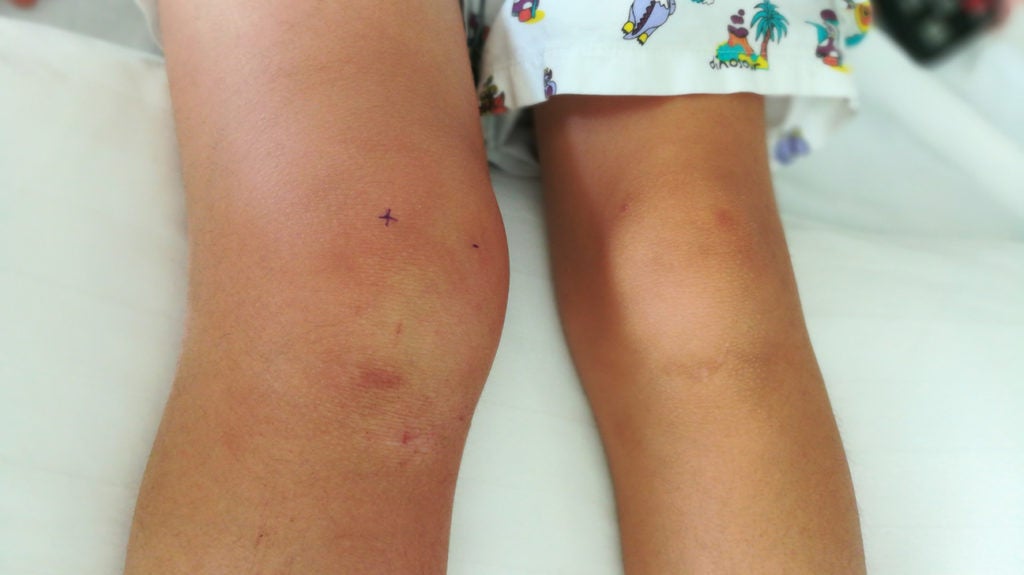
(Aspiration is described at the bottom of this page.) If more information is needed, the doctor may recommend medical imaging, such as an x-ray, or removing fluid from the knee using an in-office procedure called aspiration. The physical examination and patient interview may provide enough information to make an accurate diagnosis. Knee swelling has been present for 3 days or longerĪ doctor will examine the patient's knee and ask the patient several questions.The person has a fever of 100.4° F or higher.The skin over the knee turns hot or red.


The knee is severely swollen or has a pronounced abnormality.If the person is still unsure whether to seek professional medical treatment, a phone call to a doctor or nurse can help determine whether an office visit is necessary. When to Contact a Doctorīelow are guidelines to help people decide if their knee swelling requires medical attention.
#Fluid on the knee how to#
Read on to learn when to contact a doctor, how to treat a swollen knee at home, and how doctors can remove fluid from a knee using a process called aspiration. Medical attention is recommended if the knee is persistently swollen or accompanied by severe pain or other serious symptoms.

When does a swollen knee require medical care, and when can it be treated at home? Mild to moderate knee swelling and knee effusion-sometimes called water on the knee-can usually be treated at home.


 0 kommentar(er)
0 kommentar(er)
